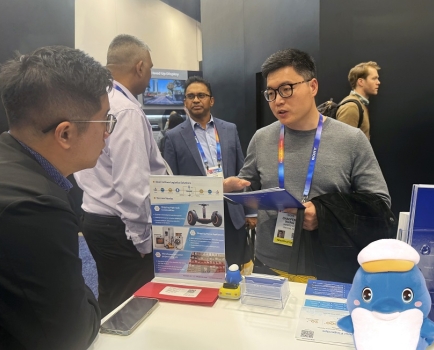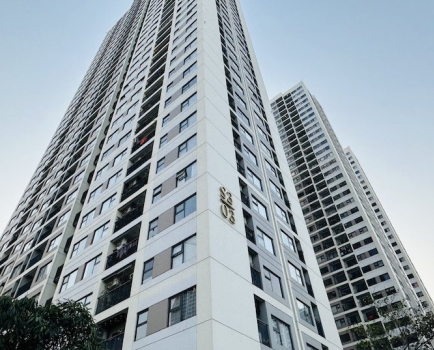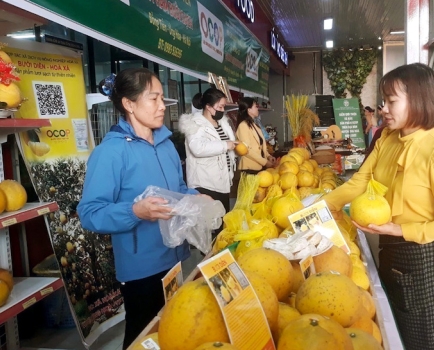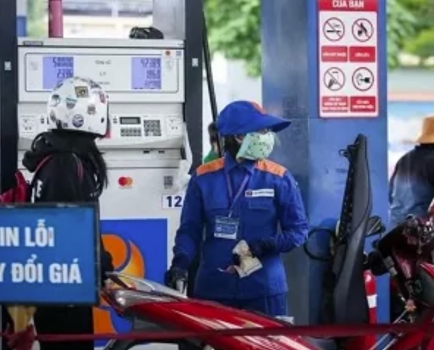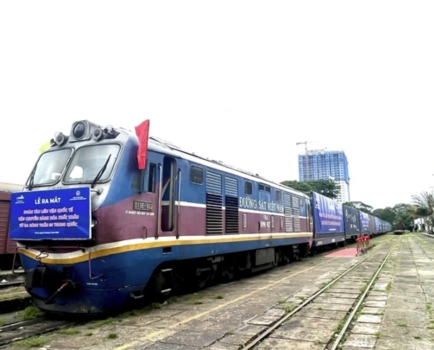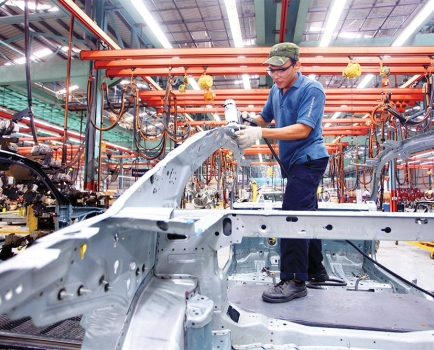Steering Ca Mau Toward Rapid, Strong, and Sustainable Development
Wed, 18 Sep 2024 15:01:00 | Print | Email Share:
Recognizing the important role of planning in local socio-economic development, Ca Mau province has developed and submitted its 2021-2030 Provincial Plan, with a vision to 2050, to the Prime Minister for approval under Decision 1386/QD-TTg dated November 16, 2023. This plan aims to drive rapid, strong and sustainable development in the province. For further information about the plan, Vietnam Business Forum interviewed Mr. Lam Van Bi, Vice Chairman of the Ca Mau Provincial People's Committee.
 |
What is the significance of the Prime Minister's approval of the Ca Mau Provincial Plan for the province's socio-economic development, defense, and security?
The Ca Mau provincial plan for 2021-2030, with a vision to 2050, approved by the Prime Minister at Decision 1386/QD-TTg dated November 16, 2023, is important for setting the framework and direction for socio-economic development and investment attraction in the province's upcoming growth phase.
The plan integrates new factors to leverage Ca Mau's potential, comparative advantages, and unique features while addressing past challenges. It provides an important foundation for devising policies and socio-economic development plans, facilitating both breakthrough growth and regional integration with the Mekong Delta and nationwide.
Can you explain the plan to organize Ca Mau's socio-economic activities into three economic zones, five growth poles, two economic corridors, and development axes?
The Ca Mau provincial plan for 2021-2030, with a vision to 2050, embraces innovative thinking and methods, capitalizing on the province's unique economic potential. It focuses on a green economic approach, harmonizing with nature, and emphasizes economic restructuring and growth model innovation to achieve rapid, comprehensive, and sustainable development.
According to the plan, Ca Mau province focuses on developing three economic zones, five growth poles, two economic corridors, and development linkage axes. This plan features a central service-urban-industrial development zone with Ca Mau City as a growth pole. It also includes an urban-industrial-economic development zone for fisheries, agriculture and forestry along the West coast, with Song Doc urban area as a growth pole. Additionally, there will be an industrial-urban-economic development zone for fisheries, agriculture, and forestry along the East coast. This zone has growth poles in Nam Can urban area, associated with Nam Can Economic Zone, Tan Thuan urban area, and Dat Mui urban area, linked to Hon Khoai General Seaport.
Ca Mau will organize spatial linkages of socio-economic activities through the formation of two economic corridors and development linkage axes. The North-South economic corridor will connect Ca Mau city, Cai Nuoc, Nam Can and Dat Mui. The East-West economic corridor will link Tan Thuan, Dam Doi and Song Doc.
For development linkage axes, Ca Mau will focus on several key routes. The National Highway 1 axis will serve as the national urban economic corridor, running through Ca Mau city to Nam Can. The National Highway 63 economic-urban axis will connect Ca Mau city to the Xa Xia border gate in Kien Giang province. The Southern coastal economic-urban axis will link Ca Mau city with Rach Gia city in Kien Giang province. Additionally, a marine and coastal economic axis will connect with international and national sea routes. The intra-regional economic-urban axis will extend from Ca Mau city to Song Doc, Dam Doi town, and connect with Ganh Hao Port in Bac Lieu province, as well as the National Waterway Economic Axis.

Prime Minister Pham Minh Chinh and provincial leaders present investment policies and registration certificates to investors at the Conference on Masterplan Announcement and Investment Promotion of Ca Mau Province 2023
How does the plan aim to establish Ca Mau as a national marine economic center, and what are its key strengths and development orientations?
Ca Mau is unique in the country for its three sea borders and a coastline of 254 km. The province boasts a large sea area with three island clusters near the shore namely Hon Khoai, Hon Chuoi and Hon Da Bac, and is one of the four key fishing grounds in the country, covering 80,000 km² and rich in aquatic resources. It has the largest shrimp farming area in the nation, approximately 300,000 ha, and leads in shrimp output with an annual export turnover exceeding US$1 billion. Additionally, Ca Mau has potential for eco-tourism, renewable energy development (including wind, solar, and gas electricity), and marine economic zones.
To harness the potential of the marine economy and establish Ca Mau as a sustainable marine economic hub regionally and nationally, the province will focus on several key areas. First, it will prioritize investment in coastal infrastructure, including coastal cities and roads connecting regional coastal corridors. Emphasis will be placed on developing sea transport routes to link Ca Mau with economic centers, economic zones, and island clusters to support marine and island economies. The province will also invest in upgrading fishing port infrastructure and storm shelters for fishing boats, and enhance the fishing boat information system to improve sea risk management, response and rescue operations.
Additionally, Ca Mau will develop the mechanical industry, particularly shipbuilding and repair facilities at Song Doc, Khanh Hoi and Rach Goc. The province will review and advance the construction of industrial clusters in Tan Thuan, Rach Goc, Cai Doi Vam, Khanh Hoi, and other key areas. Ca Mau will continue to implement the Action Plan for the Vietnam Fisheries Development Strategy up to 2030, with a vision to 2045.
Ca Mau province will focus on restructuring fisheries exploitation to promote sustainability. This includes reorganizing marine fisheries production by adapting vessels and methods to the specific sea areas, natural environment, and marine resources. The province will support coastal communities in transitioning from destructive and prohibited fishing activities to roles in conservation, tourism, and aquaculture. Investment will be directed toward seafood seed production and the development of coastal and island seafood farming areas, including sea fish, mollusks, seaweed, and more. Ca Mau will also refine policy mechanisms, integrating wind and solar power plans that align with provincial conditions while conserving land, marine, and island resources. The province aims to effectively implement its electricity export project once approved by authorities. The province will strengthen national defense and people's security, ensuring preparedness for potential situations and maintaining independence, sovereignty, and national interests.

Ca Mau province aims to leverage its distinct potential and advantages by focusing on renewable energy and rapidly expanding the gas-electricity-fertilizer industrial cluster
What key socio-economic development solutions has Ca Mau proposed to achieve its goal of becoming a fairly developed province in the Mekong Delta by 2030, with a GRDP growth rate of 7.5% per year?
To achieve these goals, we will prioritize implementing the Ca Mau provincial Plan for 2021-2030, with a vision to 2050. This plan aims to effectively leverage Ca Mau's potential, comparative advantages and unique competitive strengths. We will continue to restructure the economy, focusing on transforming the development model to enhance growth quality, productivity and adaptability. Investment will be prioritized in developing a comprehensive and modern infrastructure system, including transportation, urban, economic zone, industrial park, tourism, irrigation and flood protection infrastructure. Ca Mau will also expand investment opportunities and create favorable conditions to mobilize capital from various economic sectors, utilizing public-private partnerships (PPP) and other suitable investment methods.
To sustainably develop the marine economy and ensure effective exploitation, the province will initiate investment procedures for constructing a Ca Mau seaport system, including Hon Khoai Port on Hon Khoai Island, Nam Can Port in Nam Can district, and Song Doc port in Tran Van Thoi district, as outlined in the plan. The province will also review and propose specific policies and mechanisms for the Mekong Delta region, including tailored policies for Ca Mau. Efforts will be made to enhance administrative reform, improve the investment and business environment, and ensure fair, transparent competition. Ca Mau will center its efforts around people and businesses, building trust within the business community and among investors. The province will focus on advancing science, technology, and innovation, promoting digital transformation, and developing a digital economy and digital society. There will be a strong emphasis on developing human resources, particularly high-quality talent. The province aims to attract, promote, and reward skilled workforce in key sectors such as processing and manufacturing, renewable energy, transportation, logistics and high-tech agriculture.
Thank you very much!
By: Cong Luan, Vietnam Business Forum
Source: https://vccinews.com/prode/58386/steering-ca-mau-toward-rapid-strong-and-sustainable-development.html
---------------------------------------------
Same category News :



